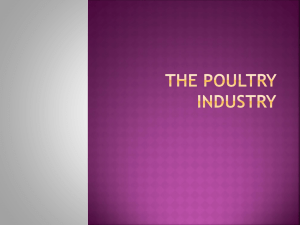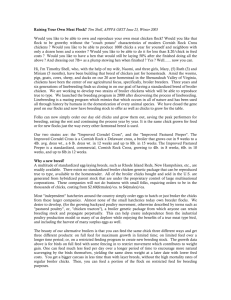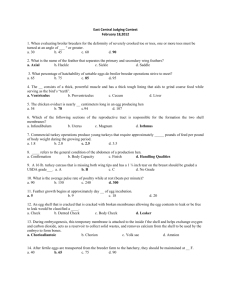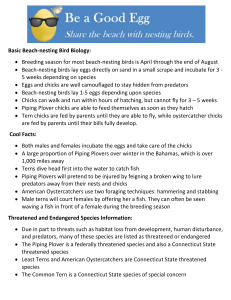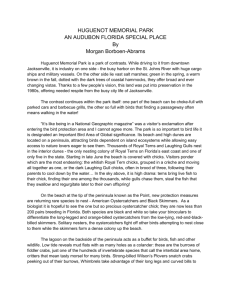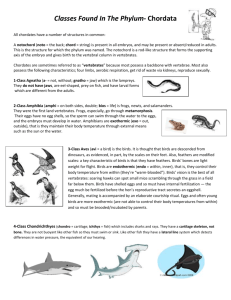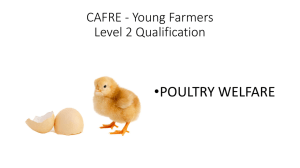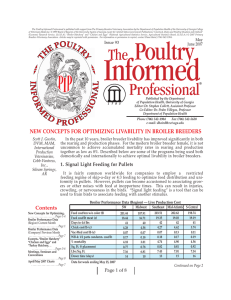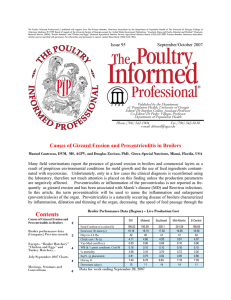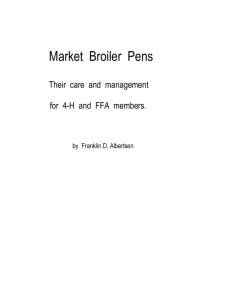vertical_integration
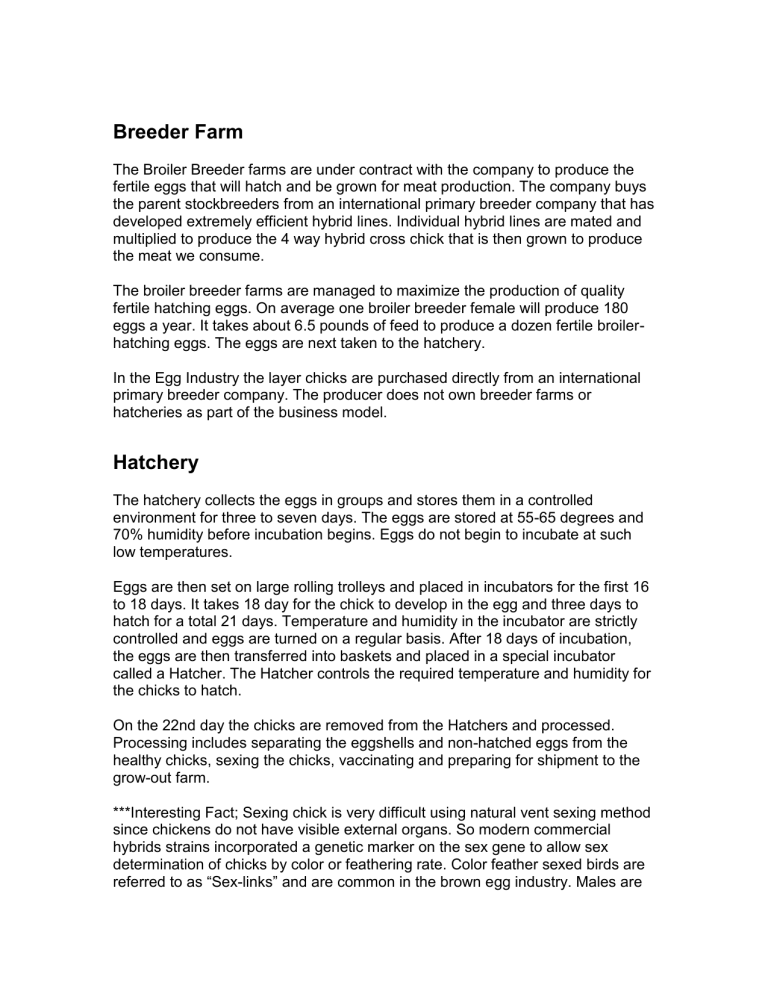
Breeder Farm
The Broiler Breeder farms are under contract with the company to produce the fertile eggs that will hatch and be grown for meat production. The company buys the parent stockbreeders from an international primary breeder company that has developed extremely efficient hybrid lines. Individual hybrid lines are mated and multiplied to produce the 4 way hybrid cross chick that is then grown to produce the meat we consume.
The broiler breeder farms are managed to maximize the production of quality fertile hatching eggs. On average one broiler breeder female will produce 180 eggs a year. It takes about 6.5 pounds of feed to produce a dozen fertile broilerhatching eggs. The eggs are next taken to the hatchery.
In the Egg Industry the layer chicks are purchased directly from an international primary breeder company. The producer does not own breeder farms or hatcheries as part of the business model.
Hatchery
The hatchery collects the eggs in groups and stores them in a controlled environment for three to seven days. The eggs are stored at 55-65 degrees and
70% humidity before incubation begins. Eggs do not begin to incubate at such low temperatures.
Eggs are then set on large rolling trolleys and placed in incubators for the first 16 to 18 days. It takes 18 day for the chick to develop in the egg and three days to hatch for a total 21 days. Temperature and humidity in the incubator are strictly controlled and eggs are turned on a regular basis. After 18 days of incubation, the eggs are then transferred into baskets and placed in a special incubator called a Hatcher. The Hatcher controls the required temperature and humidity for the chicks to hatch.
On the 22nd day the chicks are removed from the Hatchers and processed.
Processing includes separating the eggshells and non-hatched eggs from the healthy chicks, sexing the chicks, vaccinating and preparing for shipment to the grow-out farm.
***Interesting Fact; Sexing chick is very difficult using natural vent sexing method since chickens do not have visible external organs. So modern commercial hybrids strains incorporated a genetic marker on the sex gene to allow sex determination of chicks by color or feathering rate. Color feather sexed birds are referred to as “Sex-links” and are common in the brown egg industry. Males are
white and females are red in color at hatch. In feathering-rate sexed birds, the female shows faster feathering traits than does the male. See illustration. Note the female has much more developed primary feather plums than does the male.
***Interesting Fact; Birds draw what is left of the yolk sac into their body prior to hatching and has enough nutrients to live for 3-4 days without eating. This helps them survive in the wild until the entire clutch hatches and the mother can help them find food. Commercially, this is a great benefit because this allows us to ship chicks anywhere in the world without any ill effects to the chick. However, if chicks are fed or watered prior to shipping, they will begin to depend on nourishment from digestion and will not be able to utilize the yolk sac properly.
Feeding and watering chicks in shipment is very difficult and costly. So hatcheries let Mother Nature do her thing and allow chicks to get nourishment from the yolk sac for the duration of shipment.
Grow Out Farms
The broiler chicks typically arrive at the grow-out farm within 48 hours of hatching. Here the grower is responsible for efficiently raising the birds to market weight. Market weight varies greatly depending on the ultimate meat product desired. See “Broiler sizes by product type” illustration for more details.
Birds are typically raised in large confinement floor houses (a house measuring
45' x 500' can hold 30,000 birds) with automatic feeders and waterers, and complete environmental control. A broiler farm owner usually has one to six houses under management at a single location.
When the chicks arrive they are kept at 88 degrees F and placed on the floor near a heat source, feed, and water. As the birds grow temperature is reduced and ventilation rate is increased to make the birds comfortable. By four weeks of age, temperature of the building has been reduced to 68 degrees F, the optimal temperature for growing chickens.
Birds should reach five pounds in about 5 weeks. Larger birds will be raised to a maximum of 8 weeks of age. The targeted feed conversion is around 1.6-1.8 pound of feed per pound of meat. Once the birds reach the desired market weight, feed is withdrawn from the birds for ten hours prior to slaughter to minimize the opportunity for intestinal contests to contaminate the carcass during harvest. When the birds are scheduled for shipment to the processing facility, company-catching crews catch and crate the birds (mostly at night to prevent bruising and carcass damage) for transport to the processing plant.
After a flock goes to market the house is cleaned and prepared for the next flock.
Most broiler house will house five to six flocks each year.
The layers pullet grow-out is similar except only females are raised until they are
16-18 week of age in the grow-out facilities. Then they are transferred to the layer house. Controlled lighting is used to stimulate the birds into begin laying eggs at around 20 weeks of age. Laying hens stay in the layer house for one to three laying cycles.
Processing Plant
For broilers this is where the birds are harvested (slaughtered) for meat. Birds are carefully hung by their shanks by well-trained individuals to prevent excitement or injury to the birds prior to slaughter. Each bird is electrically stunned to render it unconscious prior to it being killed. Once the bird has been humanely slaughtered the feathers, head, shanks and oil gland are removed.
Broiler carcasses are then eviscerated, inspected and graded. The birds are then packaged and sold as a whole carcass, cut into parts to be sold in smaller tray packs or sent onto further processing. The processing plant sells all offal to rendering plants. The processing plant is also required to have its own water treatment plant.
The processing (packaging) plant for eggs is on the same farm as the laying houses. Eggs are automatically collected on a series of belts and rollers and transported to the egg packing house once or twice each day. The eggs are washed, graded and packaged in a building attached to the layer houses. Some operations are dedicated specifically for the production of liquid pasteurized eggs. In these facilities the eggs are washed, the shell is separated from the liquids, pasteurized, and pumped to tanker trucks for delivery to further processing facilities.
Further Processing Plant
In the meat industry further processing means something is done to the whole carcass. Examples of further processing would be cutting carcasses into smaller pieces (cut-up), deboning, or fabricating poultry meat into value added products.
The cut-up operation is often done at the processing plant. However, some companies ship the whole carcasses to a further processing plant for specialized cut-up. During cut-up machines cut the whole carcass into individual parts.
Deboning is where the bones are removed from specific parts like breast filets or other boneless products.
Value added refers to fabricating the carcass into consumer-ready products that requires additional time or labor. These products usually involve seasoning, breading, the addition of sauces and marinate, as well as special packaging to meet market demands for convenience. Value added products result in higher margins and profits while providing a large product choice for the consumer.
In the egg industry, further processing usually means blending liquid egg products for use in commercial baking or cooking, or developing a precooked product that can be reheated at home or in the fast food industry.
Marketing and Distribution
Not all the success in the poultry industry can be attributed to the efficiency of the integrated production system. Development of new and convenient furtherprocessed products made from poultry meat and eggs certainly add to industry profitability. The percentage of whole and cutup chicken sales has dropped from nearly 100% in 1960 to around 60% today. New further-processed, value added products have largely replaced whole and cutup chicken sales. Products like breast tenders, cooked breast rolls, boneless wings, deli-meats, ground turkey meat, and an assortment of frozen pre-cooked meals has aided in the overall industries growth. Chicken has also become a mainstay of the fast food menus as well.
Over the past 20 years there has also been an industry-wide trend toward product branding. Along with that branding there has been greater attention given to product advertising and marketing. A majority of the poultry companies have their own product development centers and sales teams. Poultry products are often transported in company owned and branded truck fleets. Poultry and eggs products are sold to schools, military or other major institutions, retail enterprises like restaurants, and food stores as well as to export markets.
Feed Mill
Since 70% or the cost of raising a broiler chicken is the feed cost, the feed mill operation is very important to the profitability of a broiler company. A typical poultry company uses approximately 6,000 tons of feed a week per complex.
Most feed mills are located near rail lines to aid in the decreasing transportation costs of feed ingredients. All processed feed is delivered to the breeder and grower farms by the company's truck fleet. Due to the transportation cost, companies usually place their feed mill, hatchery and processing plant(s) near each other in a central location and all farms must be within a set distance in order to grow under contact for that company.
Approximately 90% of a typical broiler diet is mixed from a corn/soybean base.
As feed prices have risen other feed stuffs have been substituted to formulate a well-balanced diet. The mill formulates, mixes, and processes the diets specific to each flock's needs at a given weight. Most feeds are pelleted or crumbled to maximize feed efficiency.
In conclusion, the poultry industry has been a great success story in part because of vertical integration.

